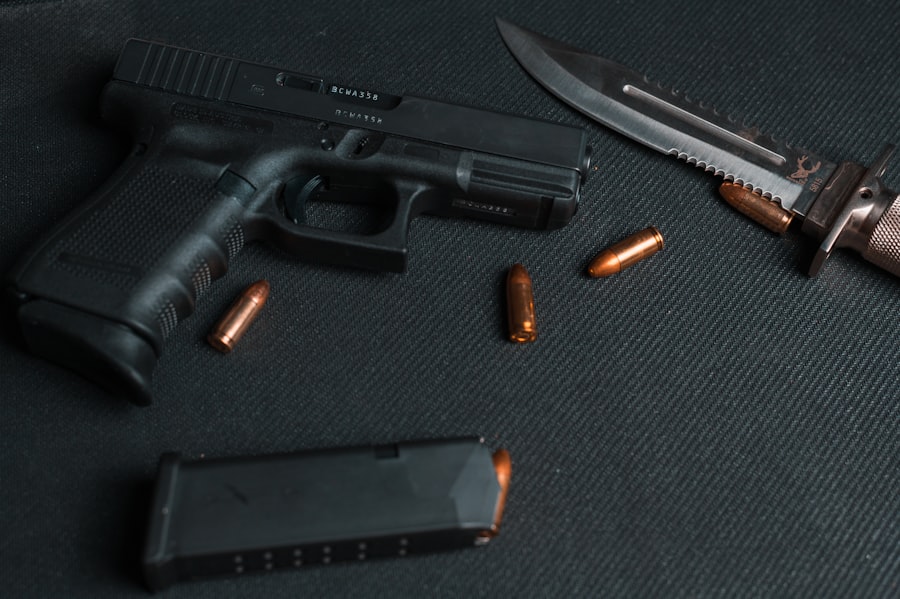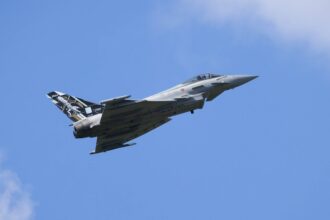Asymmetry in pricing refers to the unequal distribution of costs associated with goods and services, particularly in the context of weapons and military equipment. This phenomenon is particularly pronounced in the defense sector, where the prices of weapons can vary dramatically based on a multitude of factors. The disparity in pricing can lead to significant implications for national security, military strategy, and international relations.
Understanding the complexities of weapon pricing is essential for policymakers, military strategists, and defense contractors alike, as it shapes the landscape of modern warfare and defense capabilities. The asymmetry in weapon pricing can be attributed to various elements, including technological advancements, geopolitical tensions, and economic conditions. These factors create a multifaceted environment where the cost of weapons does not always correlate with their effectiveness or strategic value.
As nations invest in their military capabilities, the disparities in pricing can lead to imbalances in power dynamics, influencing global stability and security. This article will explore the various factors that contribute to asymmetry in weapon pricing, shedding light on the intricate web of influences that shape the defense industry.
Key Takeaways
- Asymmetry in weapon pricing refers to the unequal distribution of costs and benefits between buyers and sellers in the weapons market.
- Factors influencing the cost of weapons include raw material prices, labor costs, research and development expenses, and government regulations.
- Technology plays a significant role in weapon pricing, as advanced technologies often lead to higher production costs and subsequently higher prices for weapons.
- Demand and supply dynamics have a direct impact on weapon pricing, with increased demand leading to higher prices and vice versa.
- Geopolitical factors such as international conflicts, trade agreements, and sanctions can significantly influence weapon pricing and availability.
Factors Influencing the Cost of Weapons
The cost of weapons is influenced by a myriad of factors that extend beyond mere production expenses. One significant element is the type of weapon system being developed or procured. For instance, advanced fighter jets or naval vessels often come with exorbitant price tags due to their sophisticated technology and extensive research and development (R&D) requirements.
In contrast, smaller arms or basic munitions may be produced at a fraction of the cost, reflecting their simpler design and lower technological demands. Another critical factor is the scale of production. Economies of scale play a vital role in determining the unit cost of weapons.
Large-scale production can lead to reduced costs per unit, as fixed costs are spread over a greater number of items. Conversely, limited production runs can result in higher prices due to the inability to achieve similar efficiencies. Additionally, the choice of materials and components can significantly impact costs; high-performance materials may enhance a weapon’s capabilities but also increase its price.
The Role of Technology in Weapon Pricing

Technology serves as a double-edged sword in the realm of weapon pricing. On one hand, advancements in technology can lead to more effective and efficient weapon systems, justifying higher costs due to enhanced capabilities. For example, the integration of artificial intelligence and advanced targeting systems into military hardware can significantly improve operational effectiveness, making these systems more valuable despite their higher price tags.
As nations strive to maintain technological superiority, investments in cutting-edge research and development become paramount, further driving up costs. On the other hand, rapid technological advancements can also lead to obsolescence, creating pressure on manufacturers to innovate continuously. This relentless pursuit of technological advancement can result in escalating costs as companies invest heavily in R&D to stay competitive.
Moreover, the complexity of modern weapon systems often necessitates specialized knowledge and expertise, which can further inflate prices. As a result, the interplay between technology and pricing creates a dynamic environment where costs are continually shifting based on the latest innovations and market demands.
The Impact of Demand and Supply on Weapon Pricing
| Factors | Impact on Weapon Pricing |
|---|---|
| Demand | High demand can lead to higher prices as suppliers can charge more for their products. |
| Supply | Low supply can lead to higher prices as suppliers may increase prices due to scarcity. |
| Market Conditions | Market conditions such as competition, government regulations, and geopolitical factors can also impact weapon pricing. |
| Economic Conditions | Economic factors such as inflation, recession, and currency exchange rates can influence weapon pricing. |
The principles of supply and demand are fundamental to understanding weapon pricing dynamics. In times of heightened geopolitical tensions or conflicts, demand for specific weapon systems can surge dramatically. This increased demand often leads to higher prices as manufacturers struggle to meet the urgent needs of governments seeking to bolster their military capabilities.
Conversely, during periods of relative peace or disarmament initiatives, demand may wane, resulting in lower prices as manufacturers compete for contracts. Supply chain disruptions can also significantly impact weapon pricing. Factors such as natural disasters, trade restrictions, or geopolitical conflicts can hinder the availability of critical components needed for weapon production.
When supply is constrained while demand remains steady or increases, prices are likely to rise sharply. Additionally, fluctuations in raw material costs can further complicate pricing dynamics; for instance, changes in oil prices can affect the cost of manufacturing processes and transportation.
The Influence of Geopolitical Factors on Weapon Pricing
Geopolitical factors play a crucial role in shaping weapon pricing strategies across nations. Countries often adjust their defense budgets based on perceived threats from rival nations or regional instability. As tensions escalate between nations or within regions, governments may prioritize military spending, leading to increased demand for advanced weaponry.
This heightened competition among nations can drive up prices as countries seek to outpace one another in military capabilities. Moreover, international arms treaties and regulations can also influence pricing dynamics. Agreements aimed at controlling arms proliferation may restrict certain types of weapons or impose tariffs on their trade, affecting availability and consequently driving up prices.
Additionally, alliances and partnerships between nations can lead to preferential pricing arrangements or joint development programs that alter traditional pricing structures. The interplay between geopolitical considerations and weapon pricing underscores the complexity of global defense markets.
The Cost of Developing and Manufacturing Weapons

The development and manufacturing processes for weapons are inherently complex and costly endeavors. Research and development represent a significant portion of overall expenses, as companies invest substantial resources into designing innovative systems that meet military specifications. The lengthy timelines associated with R&D projects can further exacerbate costs, as companies must navigate regulatory approvals and testing phases before bringing a product to market.
Manufacturing costs are also influenced by factors such as labor expenses, facility overheads, and compliance with stringent quality standards. The need for precision engineering and high-quality materials adds another layer of complexity to production processes. Additionally, fluctuations in labor markets or changes in regulatory environments can impact manufacturing costs over time.
As a result, the cumulative expenses associated with developing and manufacturing weapons contribute significantly to overall pricing asymmetries within the defense sector.
The Economics of Weapon Maintenance and Upkeep
The financial implications of weapon procurement extend beyond initial purchase prices; ongoing maintenance and upkeep represent a substantial portion of total lifecycle costs. Military equipment requires regular servicing, repairs, and upgrades to ensure operational readiness and effectiveness over time. These maintenance costs can vary widely depending on the complexity of the weapon system; advanced technologies may necessitate specialized maintenance protocols that further drive up expenses.
Moreover, budget constraints often force military organizations to make difficult decisions regarding maintenance priorities. In some cases, aging equipment may be kept in service longer than ideal due to budgetary limitations, leading to increased maintenance costs over time as systems become less reliable. The economics of weapon maintenance highlight the importance of considering total lifecycle costs when evaluating procurement decisions.
The Cost of Training and Equipping Personnel for Weapon Use
The effective use of weapons requires comprehensive training programs for military personnel, which adds another layer of cost to weapon procurement strategies. Training programs must be designed to ensure that personnel are proficient in operating complex systems safely and effectively. This often involves significant investments in simulators, live-fire exercises, and ongoing education programs.
Equipping personnel with necessary gear and support systems also contributes to overall costs associated with weapon use. From personal protective equipment to logistical support for operations, these expenses must be factored into budgeting considerations when acquiring new weapons systems. As nations seek to enhance their military capabilities through advanced technologies, the associated training and equipping costs become increasingly critical components of overall defense spending.
The Cost of Weapon Disposal and Decommissioning
The lifecycle of weapons does not end with their active use; disposal and decommissioning represent significant financial considerations as well. Properly disposing of outdated or surplus weapons is essential for safety and environmental compliance but can be costly processes requiring specialized expertise and resources. The methods employed for disposal—whether through demilitarization or recycling—can vary widely in terms of expense.
Additionally, decommissioning programs must account for potential liabilities associated with retired systems. Ensuring that decommissioned weapons do not pose risks to public safety or contribute to environmental degradation requires careful planning and investment. As nations grapple with aging arsenals and evolving defense needs, the costs associated with disposal and decommissioning become increasingly relevant in discussions about overall defense expenditures.
The Financial Implications of Weapon Procurement and Acquisition
The procurement process for weapons is fraught with financial implications that extend beyond initial purchase agreements. Governments must navigate complex budgeting processes that account for not only acquisition costs but also ongoing maintenance, training, and disposal expenses over time. These considerations often lead to lengthy deliberations regarding which systems to prioritize based on available funding.
Moreover, procurement decisions are frequently influenced by political considerations as well as economic factors. Lobbying efforts from defense contractors can shape procurement strategies at both national and local levels, impacting which systems receive funding and how much they cost taxpayers over time. The interplay between financial implications and political dynamics underscores the challenges faced by governments seeking to balance national security needs with fiscal responsibility.
Addressing the Challenges of Asymmetry in Weapon Pricing
Asymmetry in weapon pricing presents significant challenges for nations navigating an increasingly complex global security landscape. Understanding the myriad factors influencing weapon costs—from technological advancements to geopolitical tensions—is essential for informed decision-making within defense sectors worldwide. Policymakers must grapple with balancing budgetary constraints against the need for effective military capabilities while considering long-term implications associated with procurement decisions.
Addressing these challenges requires a comprehensive approach that encompasses not only immediate financial considerations but also strategic planning for future needs. By fostering collaboration between governments, defense contractors, and international partners, nations can work towards creating more equitable pricing structures that enhance global security while ensuring responsible stewardship of resources. Ultimately, navigating asymmetry in weapon pricing will be crucial for maintaining stability in an ever-evolving geopolitical landscape.
In the realm of defense economics, understanding weapon cost curves and asymmetry is crucial for strategic planning and resource allocation. A related article that delves into these concepts can be found on the website “In the War Room.” This article provides insights into how cost curves can impact military strategy and the inherent asymmetries that can arise in weapon development and deployment. For a deeper exploration of these topics, you can read the full article by visiting inthewarroom.
com/’>In the War Room.
FAQs
What are weapon cost curves and asymmetry?
Weapon cost curves and asymmetry refer to the relationship between the cost of developing and producing weapons and the asymmetrical nature of conflicts. Asymmetry in conflicts occurs when one side has significantly more resources, technology, or capabilities than the other.
How do weapon cost curves and asymmetry impact military strategies?
Weapon cost curves and asymmetry can impact military strategies by influencing the types of weapons and tactics used in conflicts. In asymmetrical conflicts, the side with fewer resources may rely on unconventional tactics and low-cost weapons to counter the advantages of the more powerful side.
What factors contribute to weapon cost curves and asymmetry?
Factors that contribute to weapon cost curves and asymmetry include technological advancements, resource availability, and the ability of different actors to innovate and adapt to changing circumstances. Additionally, political and economic considerations can also play a role in shaping asymmetrical conflicts.
How do weapon cost curves and asymmetry affect defense budgets?
Weapon cost curves and asymmetry can impact defense budgets by influencing the allocation of resources towards developing and acquiring weapons that are effective in asymmetrical conflicts. This may involve investing in technologies and strategies that are more cost-effective and adaptable to a wide range of potential threats.




